Argentina: El Calafate (Perito Moreno Glacier)
Eldonita: 29.04.2019
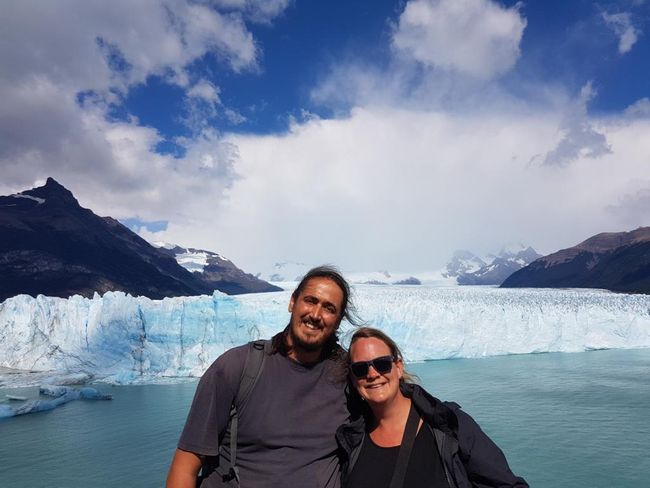
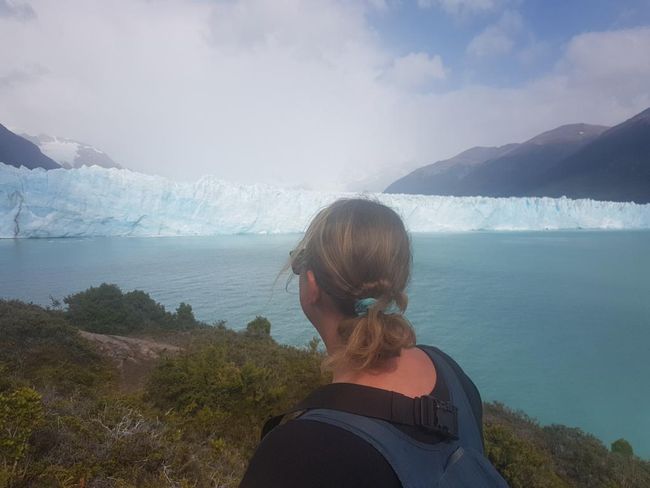
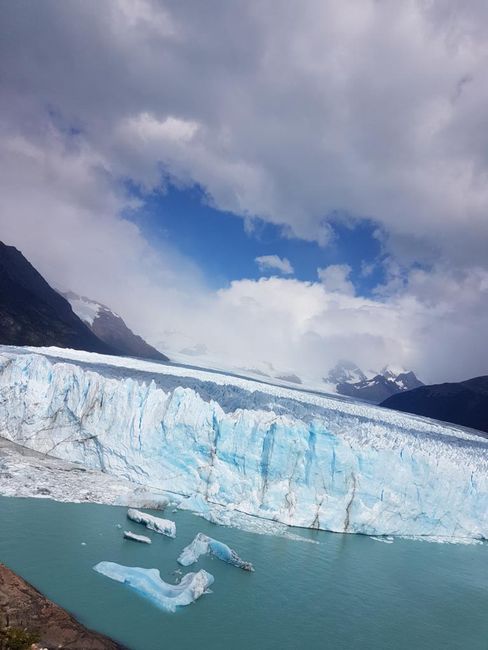
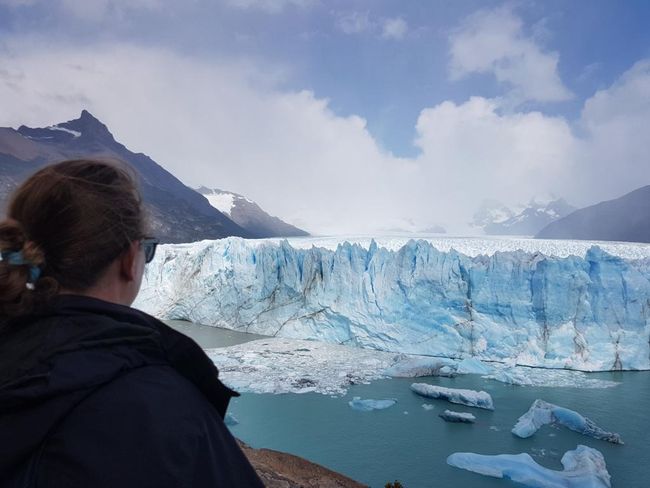
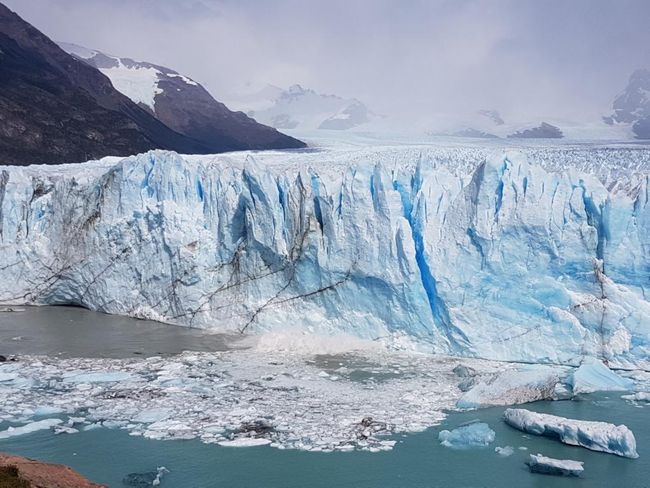
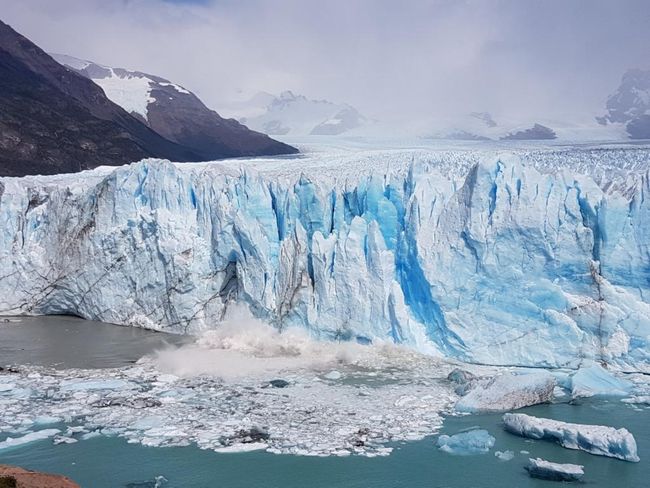
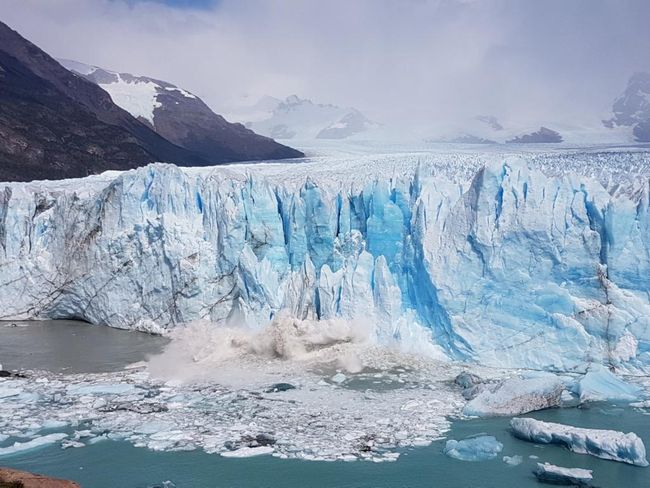
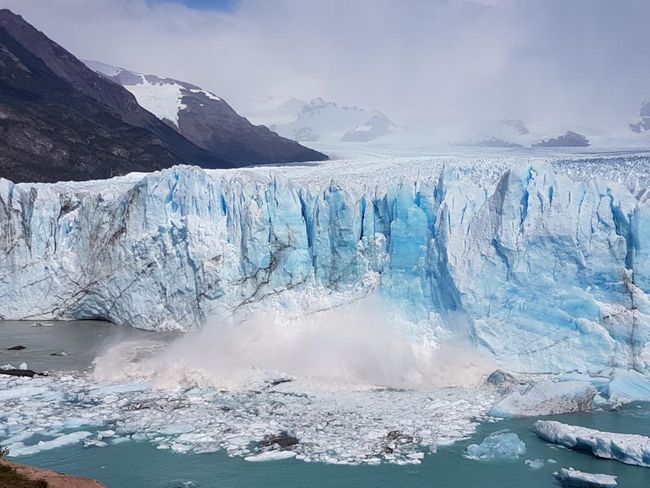
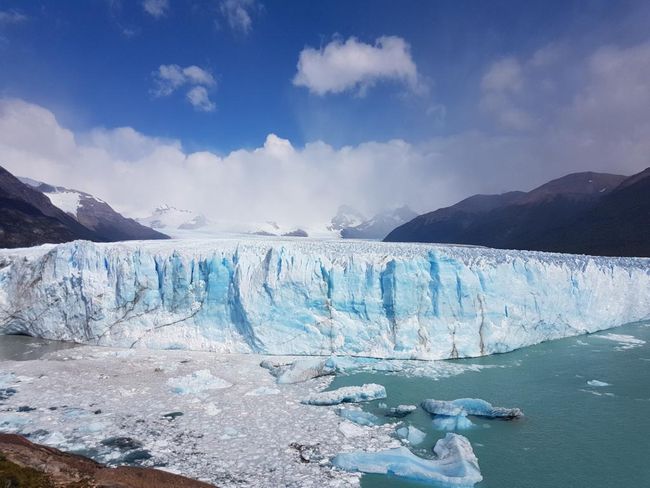
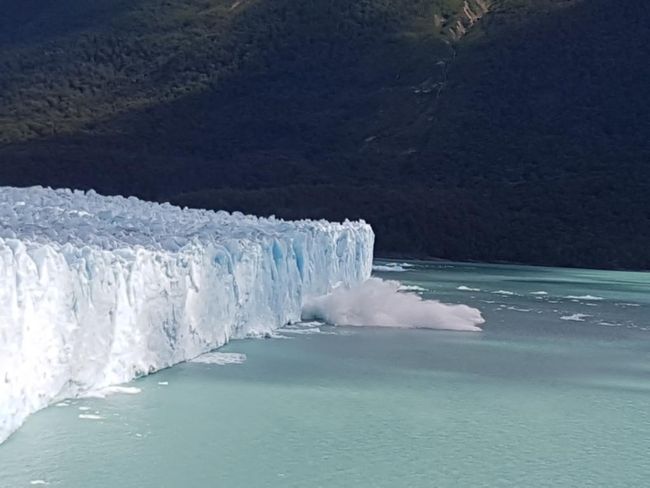
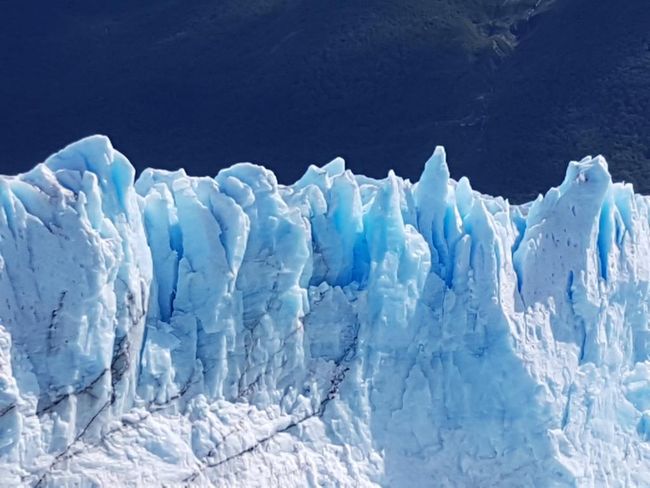
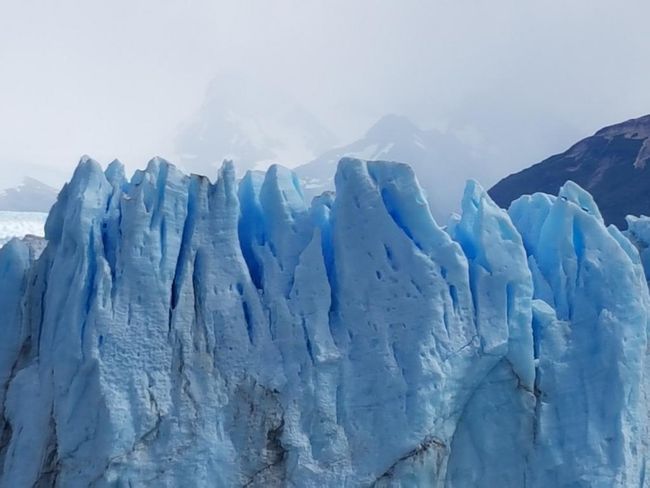
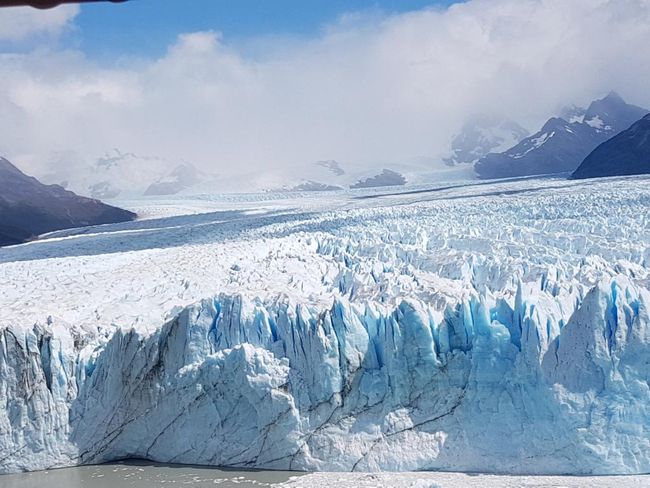
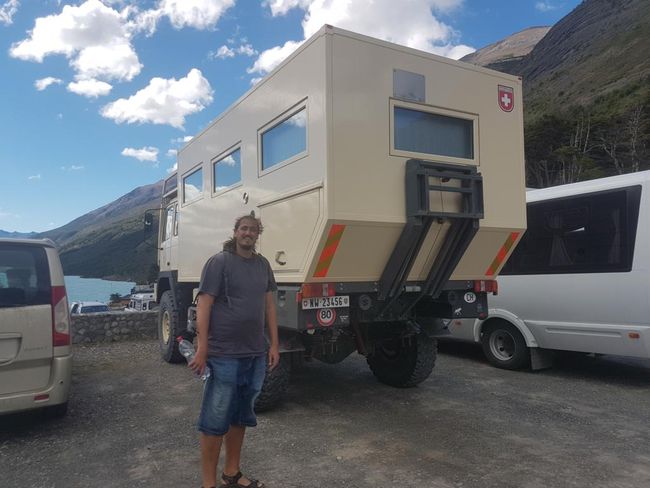
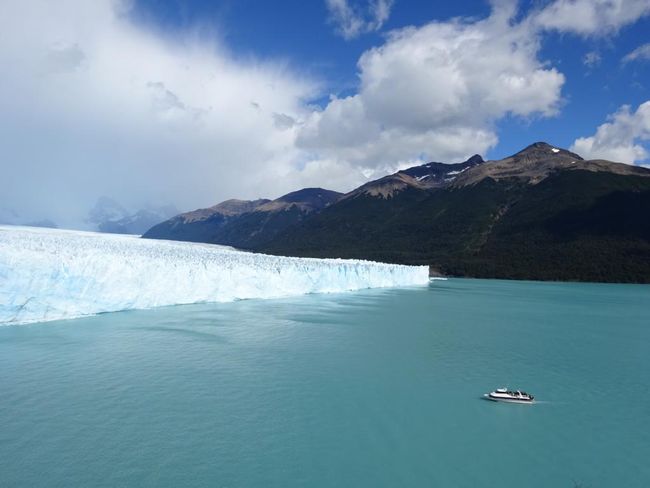
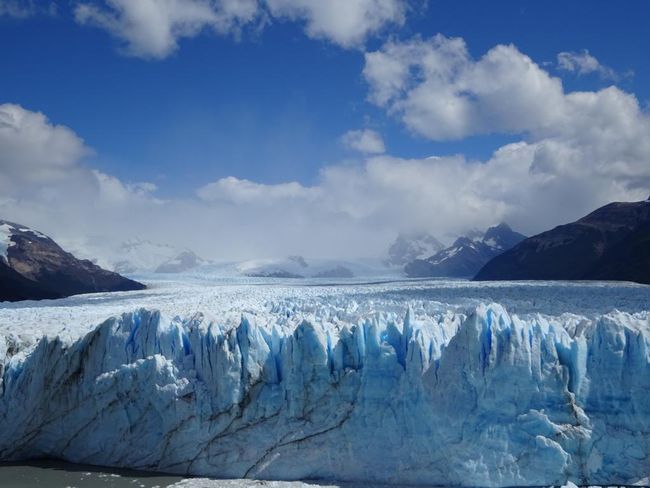
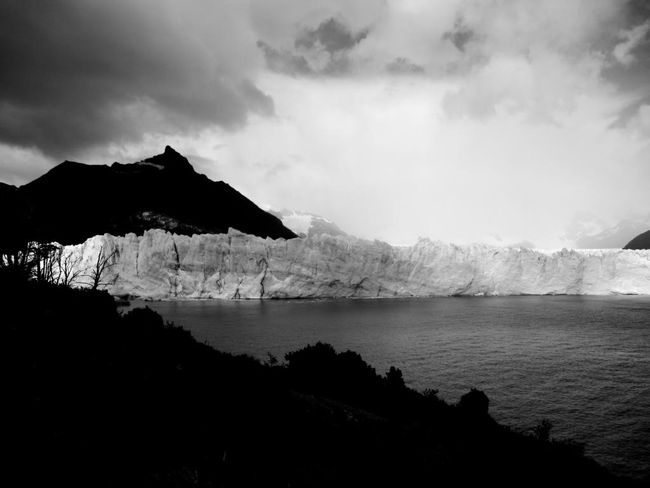
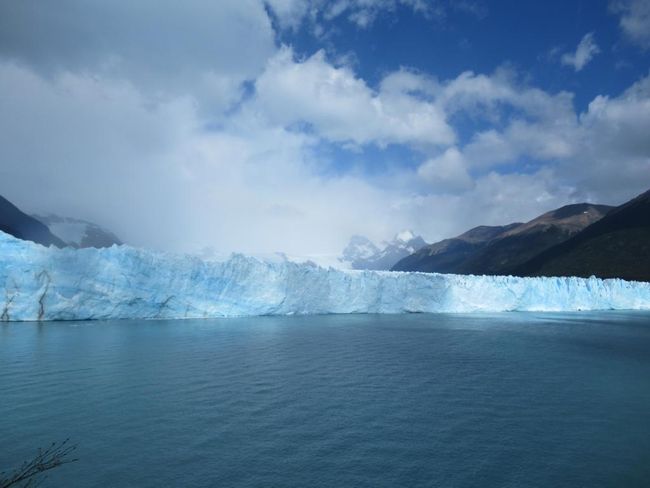
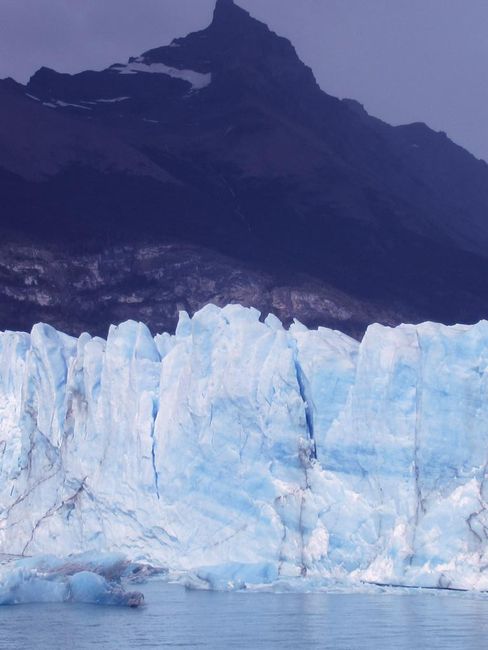
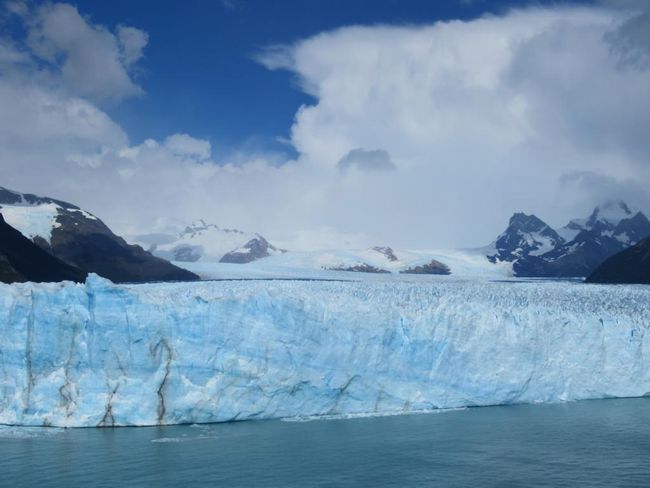
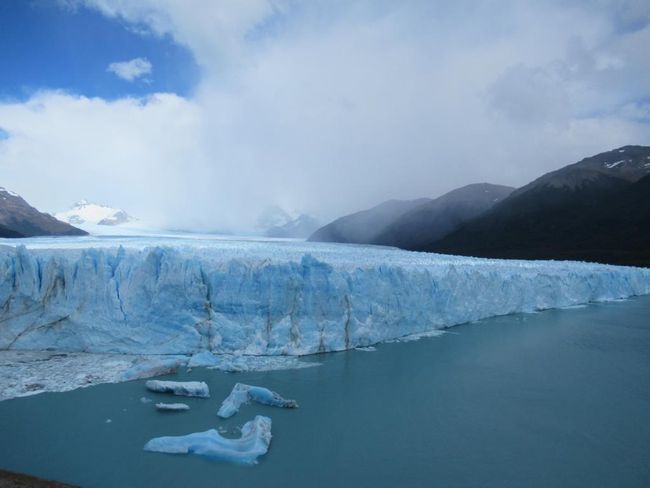
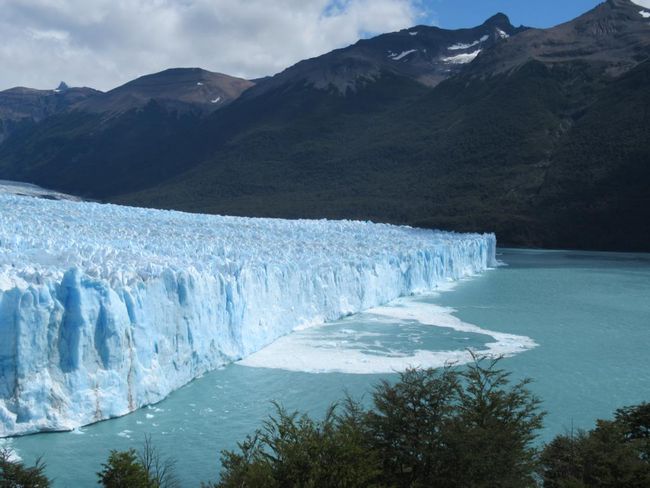
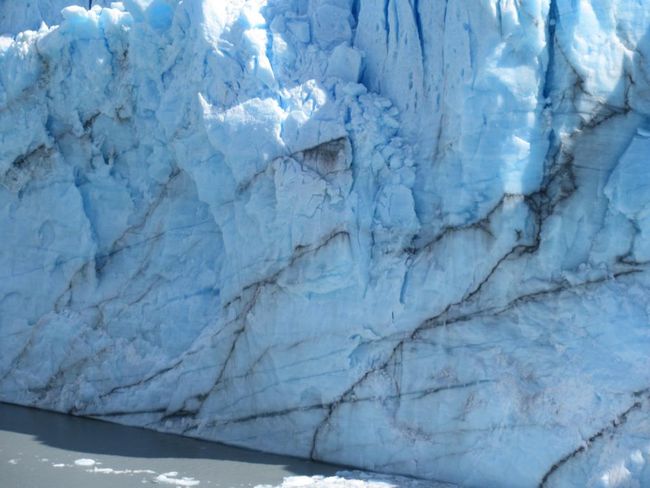
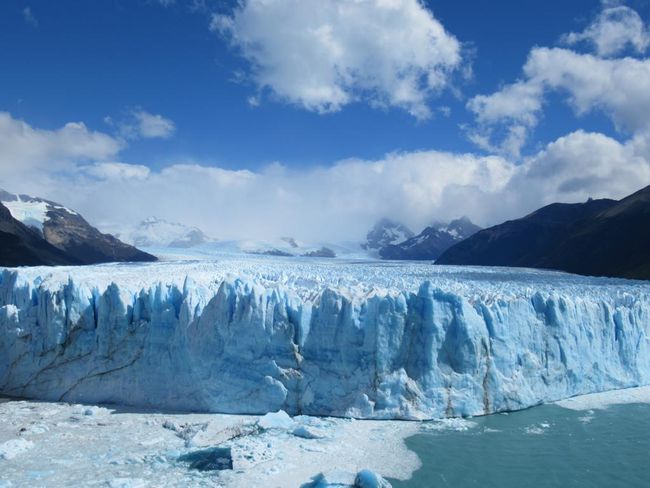
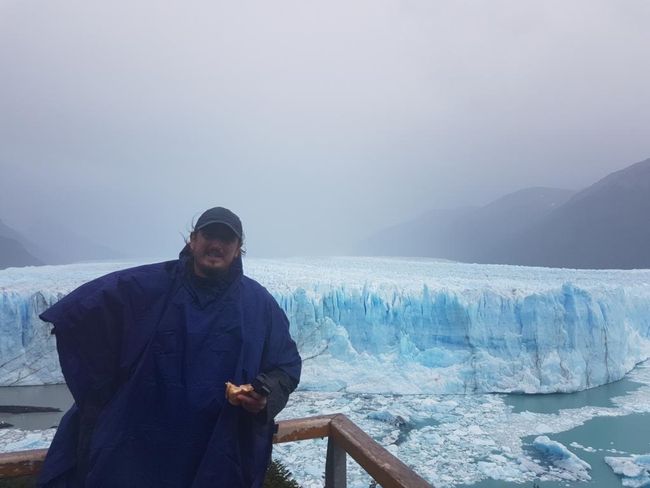
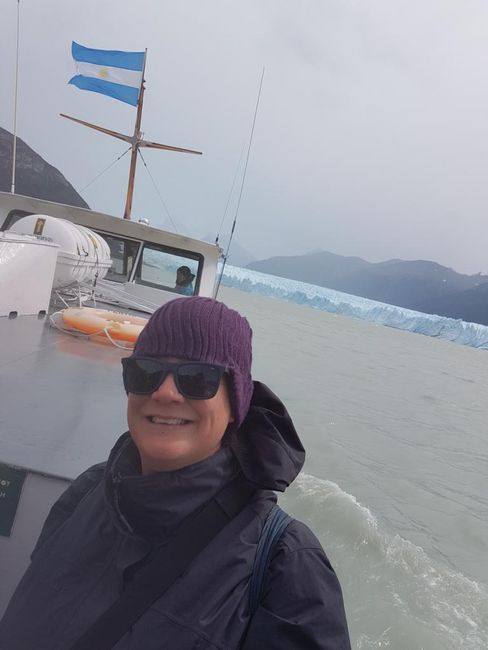
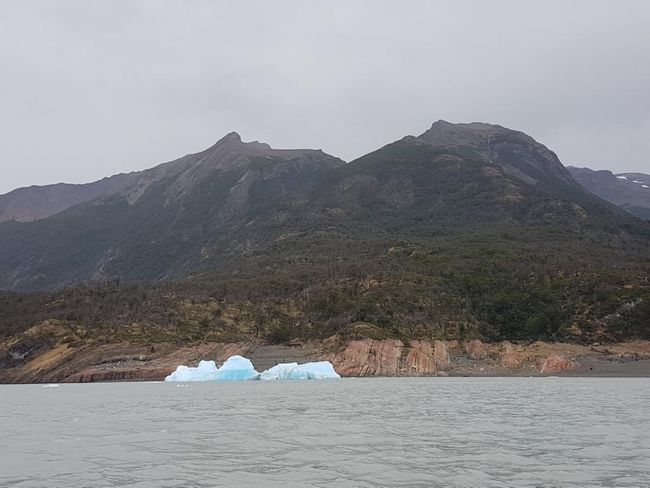
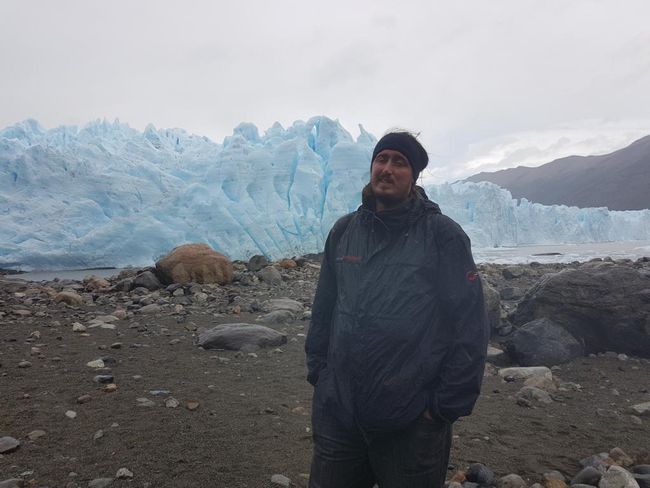
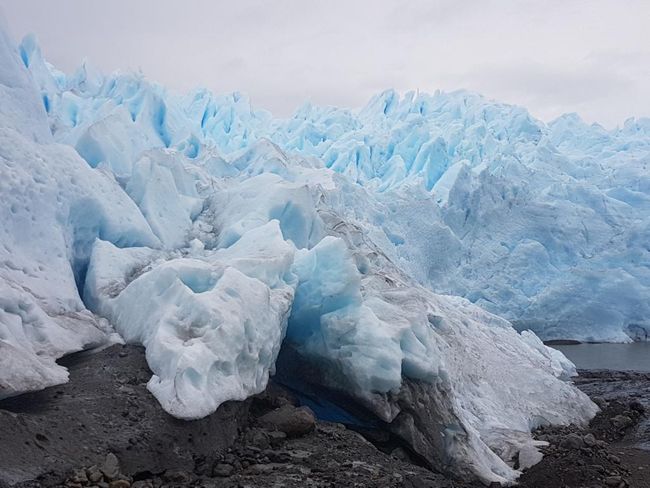
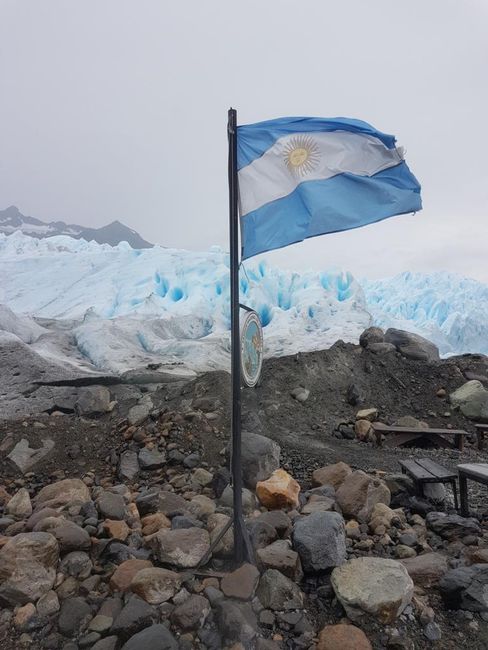
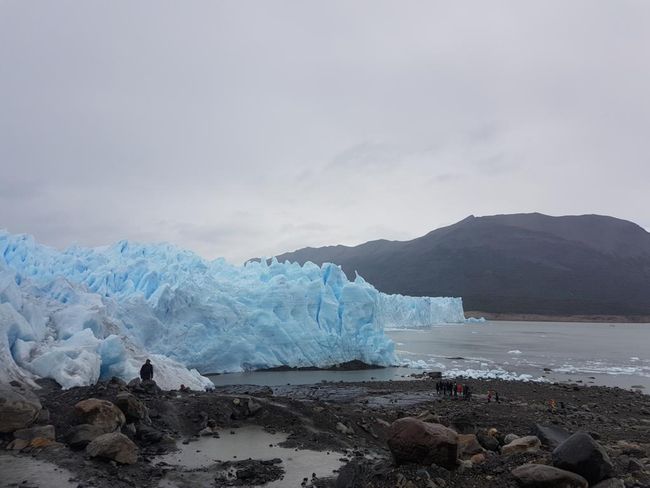
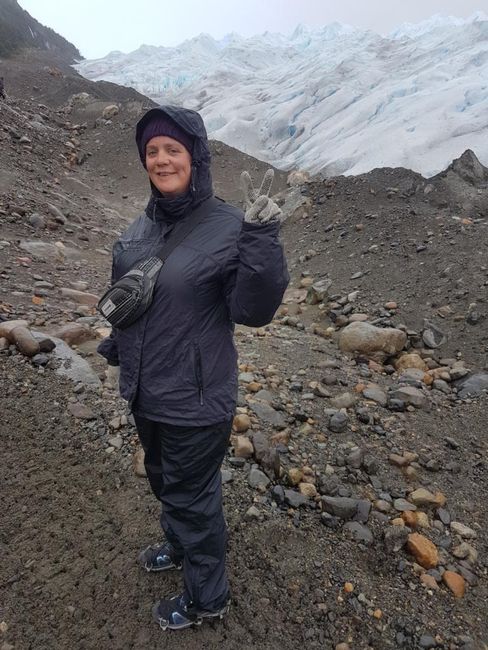
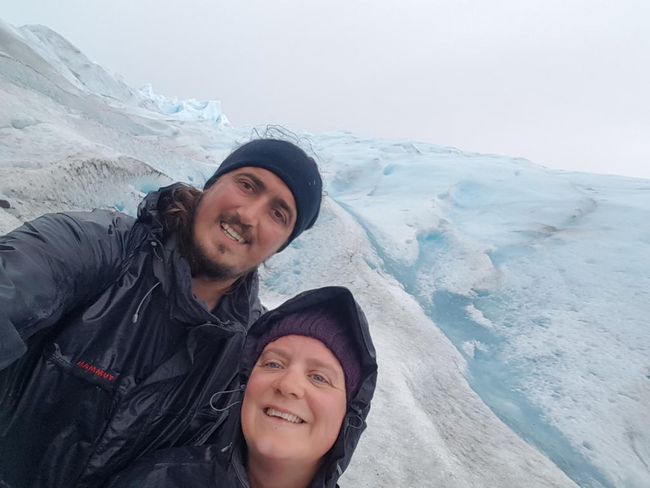
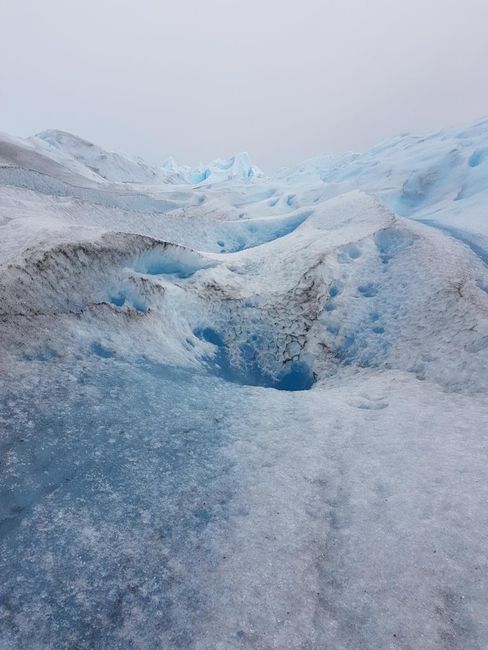
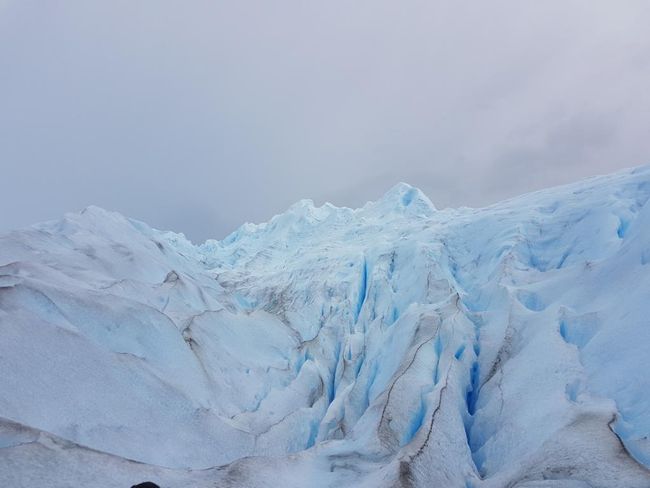
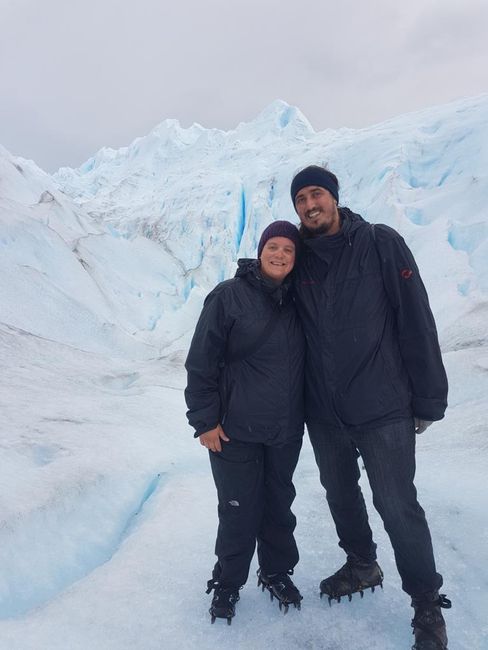
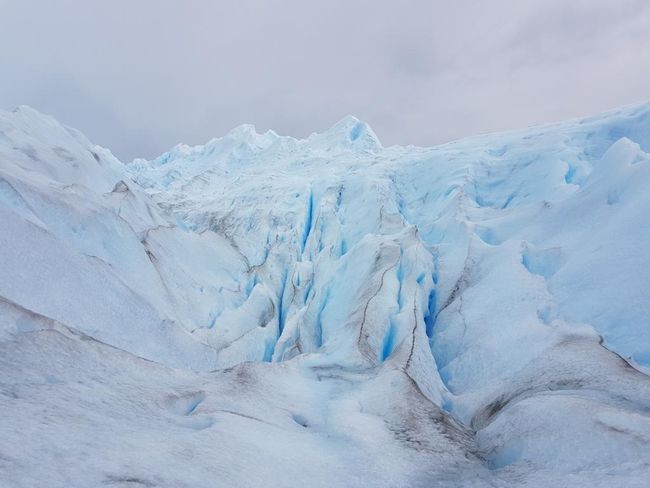
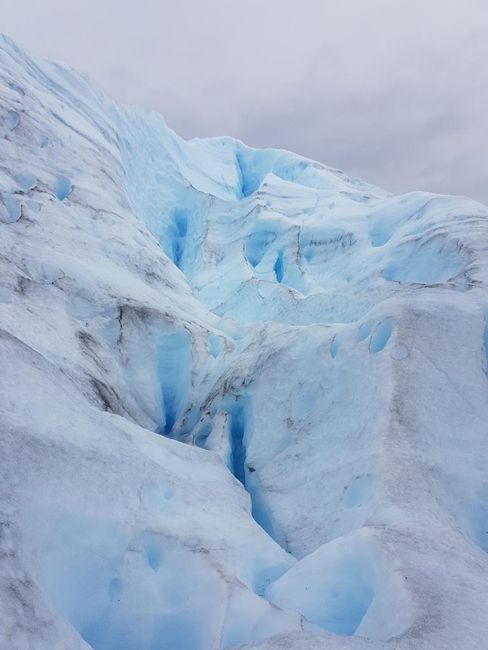
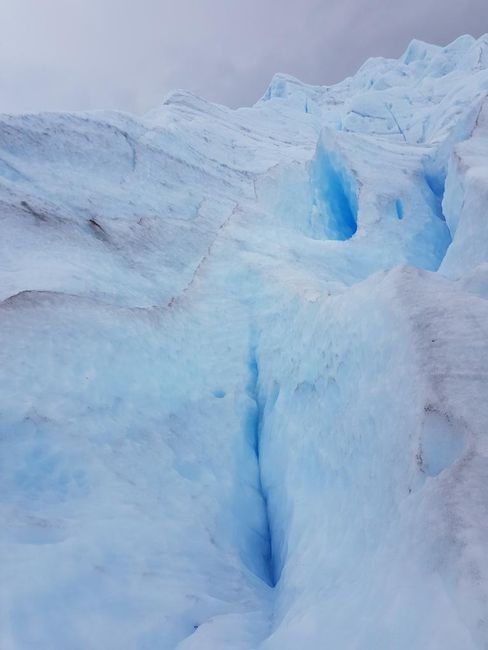
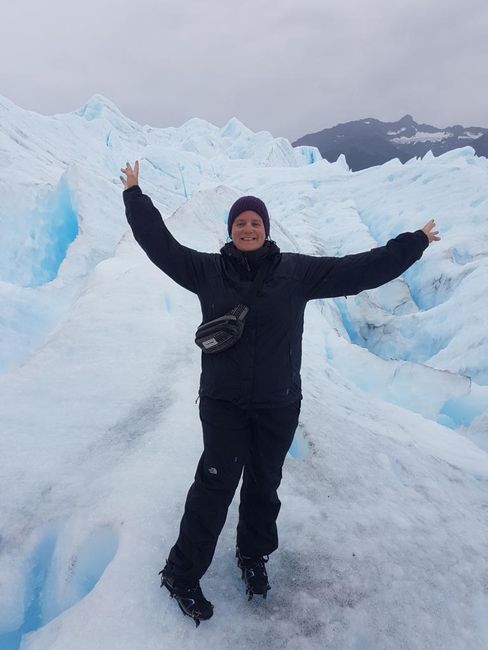
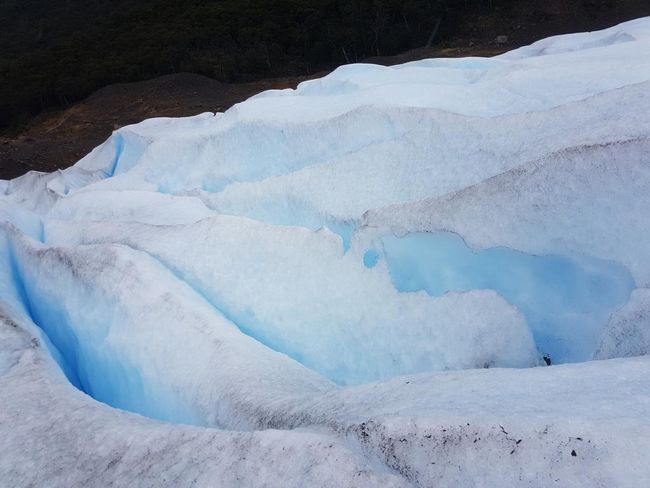
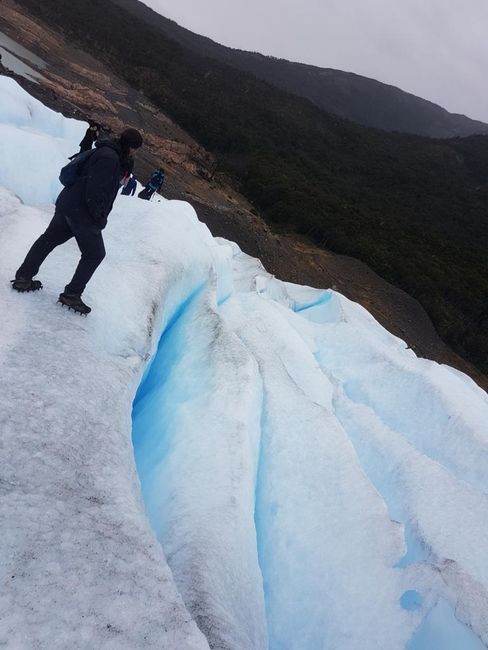
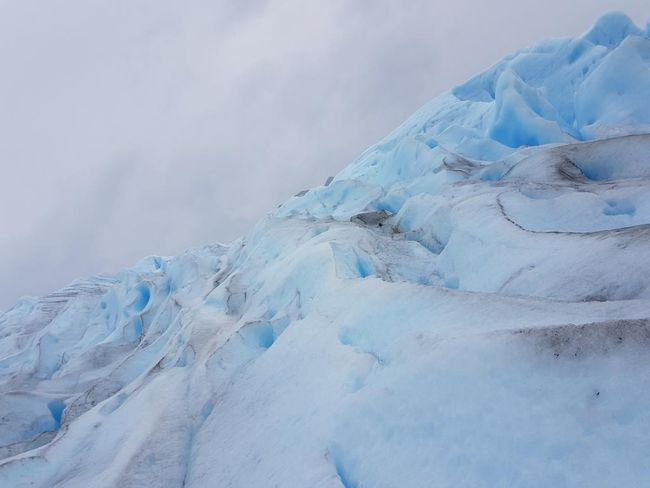
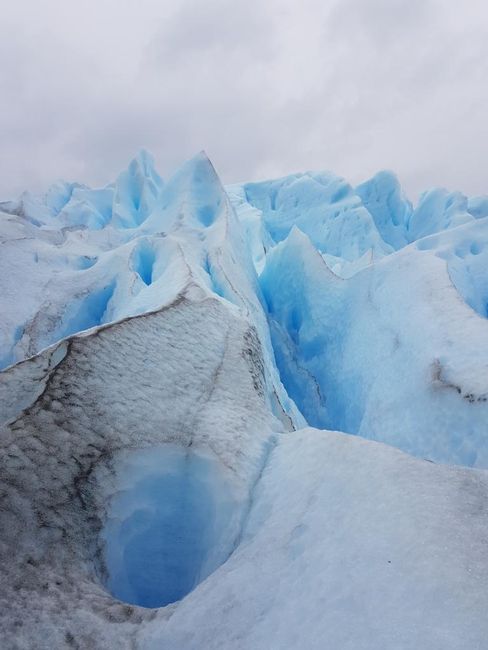
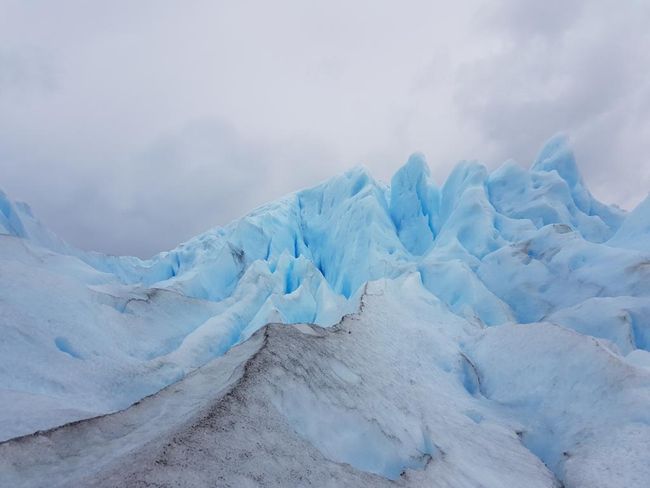
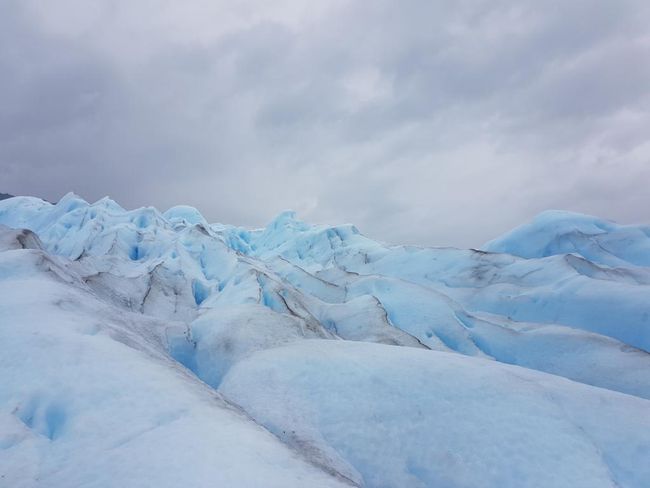
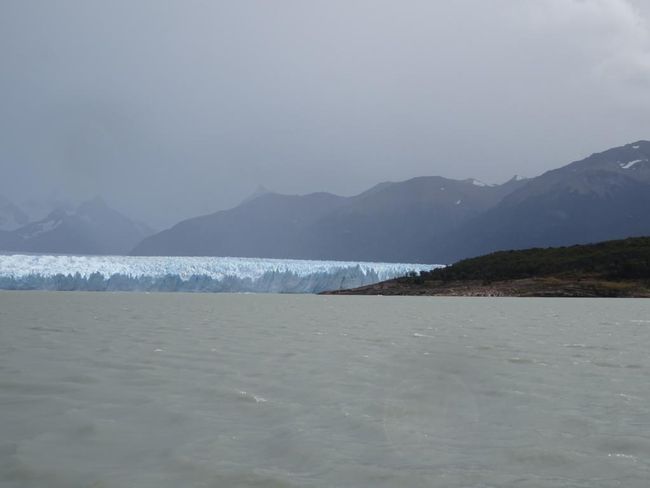
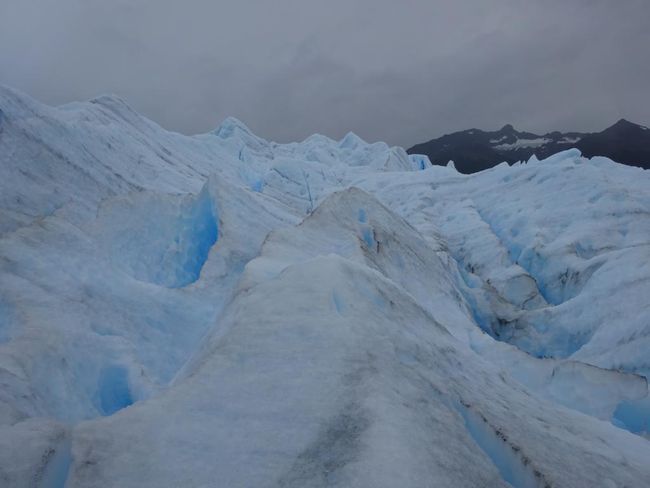
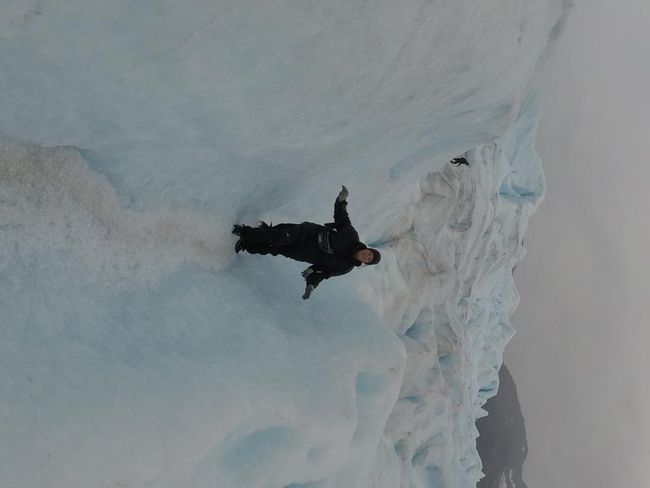
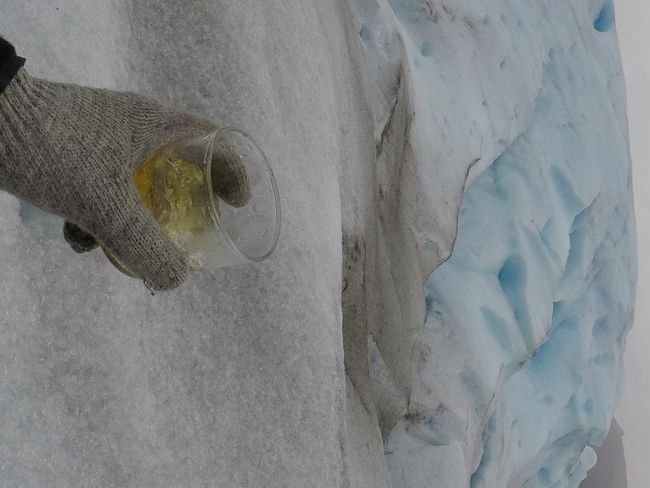
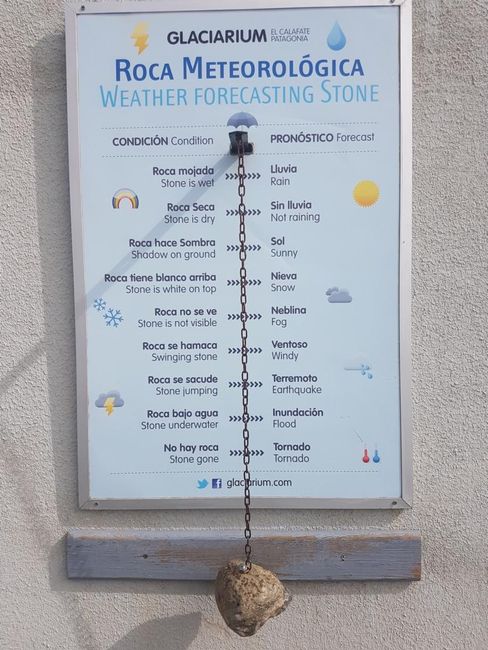
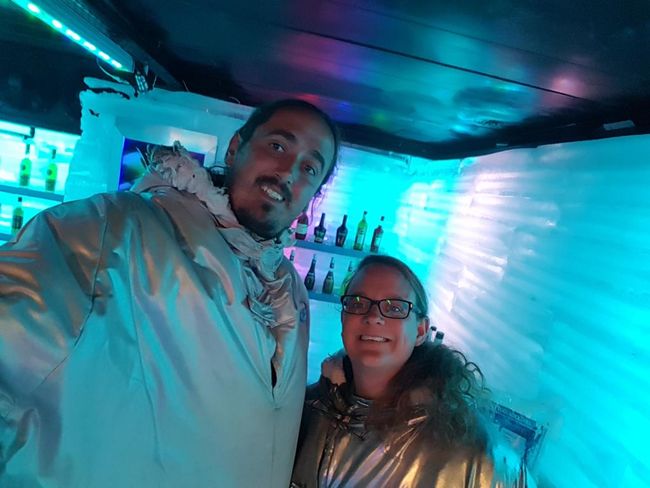
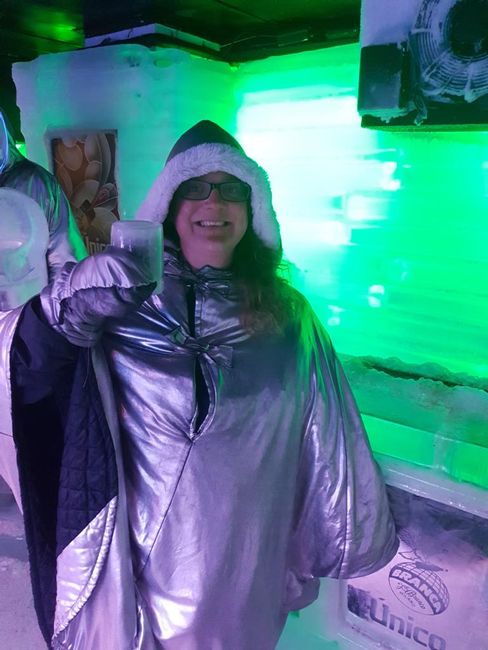
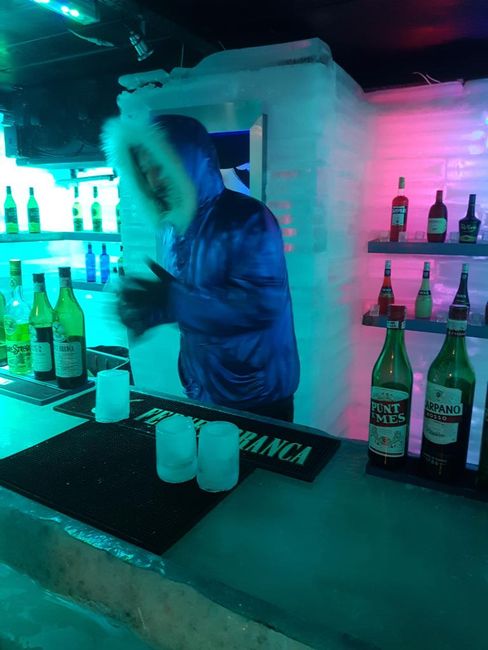
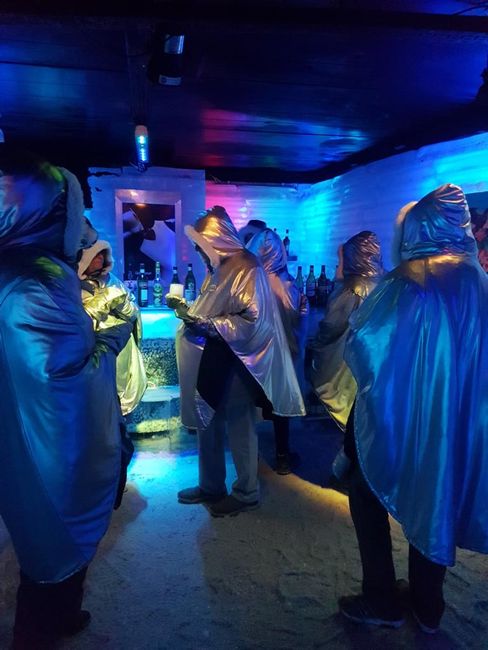
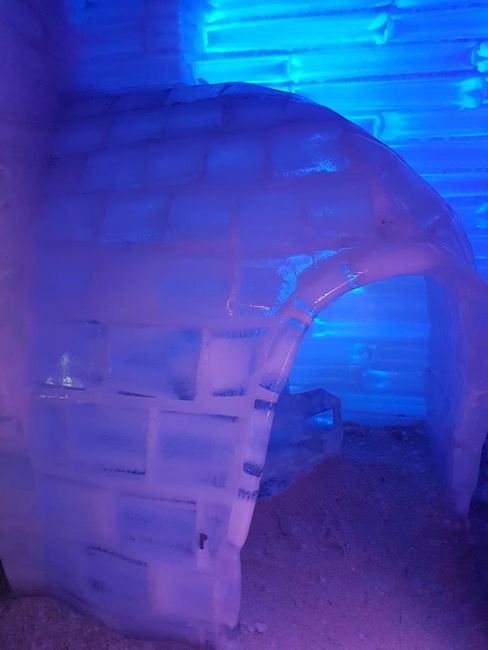
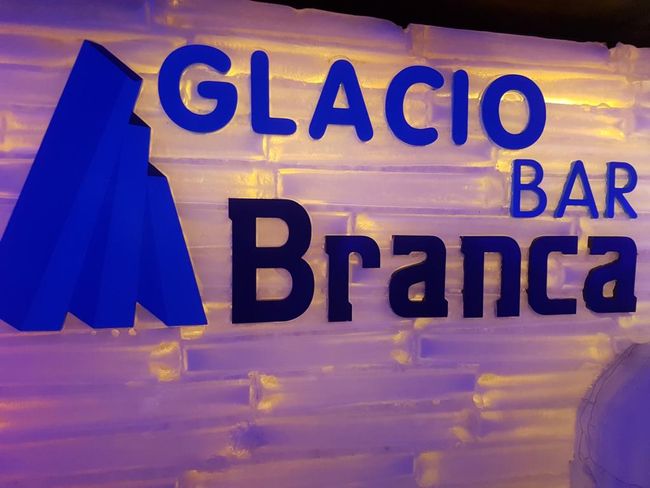
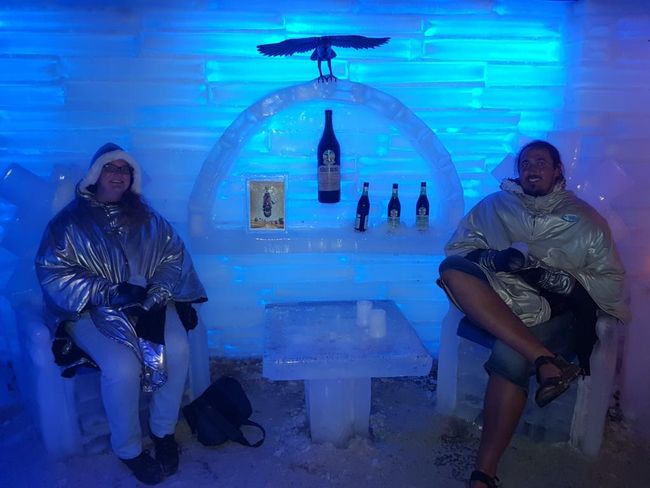
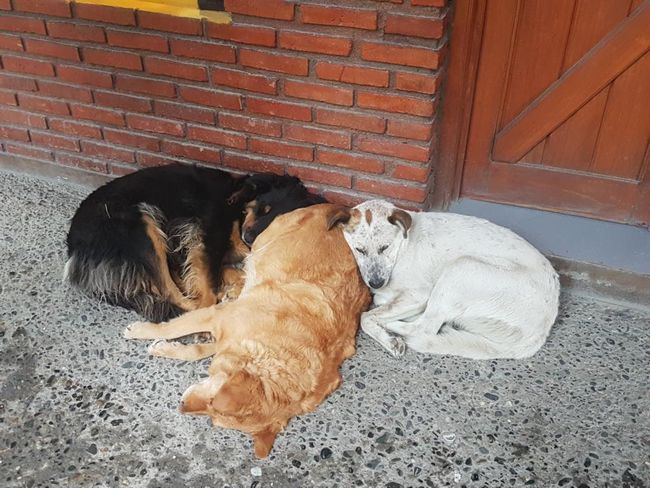
Abonu al Informilo
The drive from Chalten to El Calafate fortunately only lasted 4 hours. El Calafate is the gateway to the Southern part of the Parque Nacional los Glaciares and most tourists, like us, come here to visit the world-famous Perito Moreno Glacier. You can also visit other glaciers in the area, but the Perito Moreno is particularly spectacular because it is one of the most dynamic and easily accessible in the world. It is also famous for calving (i.e., icebergs breaking off from the glacier tongue) with a high probability of witnessing this spectacle.
The glacier is considered stagnant, although in fact it is still growing, which can only be said of a few glaciers worldwide. Although it is constantly growing, its expansion no longer continues because the glacier tongue is now adjacent to land. This also leads to the phenomenon of the dam.
Immediately after arriving in Calafate, we looked for transportation to the glacier at the bus terminal. It is not necessary to take a guided tour to the glacier; various bus companies offer transportation. The package always includes a round trip at a specific time. So if you take the bus in the morning, you have to come back at 4 PM, and if you go in the afternoon, the bus leaves in the evening. Going in the morning and coming back in the evening is not possible. So we booked the bus for the next morning.
After about an hour's drive, you reach the entrance of the national park in the morning, where you have to buy tickets, which are valid for 2 consecutive days. With the ticket, everyone also gets a plastic bag and is asked to use it as a trash bag to take all the garbage back to Calafate. From the entrance, the bus ride takes another half hour before we finally arrived at one of the two restaurants along the "walking path." The walking path consists of numerous steel walkways that are almost 4 km long when put together and offer several different viewpoints.
We had been looking forward to this visit for a long time and were absolutely thrilled when we followed the first path and eventually saw the glacier wall in front of us. From the first second, the glacier offered a breathtaking view, and it continued to do so from all possible perspectives throughout the day. When we heard the loud rumbling for the first time, we were initially startled. Judging by the noise, one would almost expect that half of the glacier is breaking apart, but actually only some small pieces of ice had broken off from the wall and fallen into the water. It's incredible how much noise these small pieces can make.
In the central part of the tour, we stood directly in front of the glacier tongue, only a few meters away. Countless people were gathered there, waiting hopefully for an iceberg to be born. Right in front of us was an overhanging spike, and everyone was staring at it, hoping that it would break off soon. In the meantime, you can hear the rumbling, crunching, and cracking inside the glacier. And you wait...and wait...and suddenly...it happened...! Not just the overhanging spike, actually a huge piece of the wall right in front of us broke off from the glacier and fell into the water with a loud noise. What a unique moment! You don't experience something like this every day; this is pure natural force! Throughout the rest of the day, we occasionally saw larger and smaller pieces of ice crashing down, but none were as big as that one. A truly lucky moment.
Another tourist (a German, it should be noted, although it must be mentioned that on this day so many Germans were gathered there that one had to seriously wonder if there were any Germans left in Germany) told us that she had been there yesterday, and the glacier had been much more active than today. It had been raining all day and piece after piece had fallen off. However, due to the heavy fog, you could only see as far as the glacier wall. Well, that's cool too, but I still preferred the glacier in nice weather. From a platform further up the slope, you could see the entire glacier and the mountains, and the alternating play of colors from the sun and the passing clouds was absolutely and indescribably magical. That glowing blue was simply amazing. Really, there are no suitable words for it; you just have to see it. Beautiful.
We wandered up and down the paths all day, passed by all the viewing platforms, and even had a little picnic with a direct view of the glacier.
Too soon, it was time to return to the bus. On the way back, we turned around with every rumble and roar to take a last look at falling ice. But it wouldn't be the last look because we would come back again the next day.
For the next day, we had booked a "Mini Ice Trekking". There is only one agency in El Calafate that offers glacier hikes. The description of the "Big Ice Tour" and its physical requirements sounded so tough, so Jörg and I opted for the small tour, which could be considered a trial run. After all, we are not the fittest beings under the sky. But the price for the Big Tour was also quite steep. In retrospect, we probably could have done it fitness-wise, but the small tour was also really nice and an unforgettable experience. After all, it was all about being ON the Perito Moreno and getting up close with this natural wonder.
After being picked up at the hotel in the morning, we headed back to the national park. Since many people only spend a single day at the glacier, there was still about 2 hours of free time to walk on the metal walkways, essentially the same program as yesterday. However, that didn't bother us, and neither did the fact that it had been going rain all day, because we could have easily spent 1-2 more days standing in front of the glacier, waiting for an iceberg to break off. We wouldn't have been bored. While most people only went down to the glacier wall briefly and then spent the rest of the time in the restaurant or crowded into the small covered hut on the main platform, we were in the front with all our winter and rain gear. After all, a little rain can't stop us. We've been carrying all this stuff with us for months without really needing it (yes, we have been really blessed with great weather up until now), and now was the time to use the rain pants and rain ponchos. So we stayed at the front for the entire 2 hours, but unfortunately, we didn't have any luck. You could clearly see that the glacier had been very active earlier in the day, based on the crescent-shaped icebergs in the water in various places. But exactly when we were there, it didn't want to do anything. Well, that's too bad.
After the 2 hours, the excursion bus took us to the boat dock, from where we were taken to the other side of the glacier tongue on the south side by boat. From the boat, you had a completely different view of the glacier wall, which towers up to 55 meters high at its highest point.
After arriving on the other side, we could leave our luggage and were provided with crampons and gloves. Or at least we should have been, because suddenly they said there were no more gloves available. And that's even though we had specifically asked about it at the agency and had been assured that we could borrow gloves because we didn't have any. If we had known that, we could have quickly gotten some in Calafate the day before. During the safety briefing, the guide even pointed out that you should wear gloves to avoid cutting yourself on the ice. When we mentioned this to him, he said we should just not fall, then nothing would happen. Haha. Really a fantastic safety concept! Jörg and I didn't accept that, of course, and complained. And voilà, suddenly they managed to find two pairs of gloves for us. The guide was already a little annoyed by us because of that, and told us not to be stupid, as we were a group and should consider each other. But when it came to finding crampons in Jörg's size (which we had also confirmed the day before in the agency - "Si si, no te preocupes" - as always), and the guide became impatient and was already about to leave with the rest of the group, I hit him with his own stupid sentence about us being a group and having to consider each other. That was the end of the mutual sniffing and testing of strength; afterwards, everyone was nice and friendly to each other again. Really. That's how Latinos are. They are friendly, lovable, and they don't hold grudges. But sometimes you have to demonstrate that you can't be fooled. Afterwards, everything is fine for everyone again. And considering the exorbitant prices they charge here, you can certainly expect some service.
But all that was incidental anyway when we finally got on the glacier. We followed a prepared path along a small section next to the glacier tongue. Actually, the "Mini-Trekking" was more of a photo tour than a real hike, but that was fine. We passed by some really stunning places where you couldn't get enough of the view. That glowing blue. Me encantó mucho!
Shortly before the end of the tour, Jörg's crampon actually broke. Great! While one guide continued with the rest of the group, the other dashed back quickly to get a new crampon. We were told to wait here and not move, they said. All right. Actually, that was a stroke of luck, because Jörg and I had some time alone on the glacier to enjoy the view and take some photos without having to worry about some other idiot stepping into the frame. However, La Muchacha came back with the new crampon surprisingly quickly, and so we were able to continue soon to catch up with the others. By that time, they had already reached the end of the tour: at the end, there was a glass of whiskey and a chocolate candy.
After about 1.5 hours on the ice, we returned to Calafate by boat and bus.
It had been a wonderful day, despite the pouring rain.
The next day, we visited the Glaciarium, which is located a bit outside of Calafate. However, there is a free shuttle bus that takes you from the town to the museum. Although the entrance fee is not exactly cheap, it must be said that this is definitely one of the better museums in South America and probably the best in Argentina. Although there is not much to see (ice has the annoying habit of melting indoors), it is thematically organized, and there are many explanations, pictures, graphics, etc., that illustrate the different themes.
The e first section deals with different forms of ice and their formation, such as glacier mills and icebergs. It also explains why ice exhibits such wonderful shades of blue. The answer is that blue light has more energy than the other colors of the light spectrum, so the blue photons can penetrate deeper into the ice. The deeper the light penetrates, the bluer the ice appears.
In a second part, the history of glacier research and the associated mountaineering sport is explained. In 1837, the researcher Louis Agassiz first proposed the theory that there had been ice ages on Earth and that the movements of glaciers have shaped the Earth. In 1840, he published his book "Études sur les glaciers."
Next, it explains how glacier ice is formed, how glaciers are structured, and where glaciers occur. The snow that falls on the glacier becomes firmer and more compact under increasing pressure from additional layers, first transforming into firn and then into glacier ice. During this process, air bubbles between the snow crystals are trapped and sealed, making the glacier ice impermeable to water and air. It is interesting that this process of transforming snow into ice is much faster in warmer regions like Patagonia or the Alps than in higher regions or at the Earth's poles, where this transformation takes many years. In extremely remote regions such as the Russian Vostok Station in Antarctica, this process takes 2500 years!
The picture of the different geometric structures of snow crystals was fascinating. I had not been aware until then that there are so many different crystal structures and how beautiful they are.
97% of the world's glacier ice is located in Antarctica, Greenland, and the Arctic. South America has 0.15%, Europe has 0.42% of the glacier ice. The African continent has the least ice, with only 0.0005%. Of the total amount of water on Earth, only 2.5% is freshwater, of which 68.7% is stored in glaciers. Incredible.
Glaciers flow downhill due to the force of gravity. The highest flow velocity is reached on the surface of the glacier tongue in the middle.
In to the next part of the exhibition, the individual glaciers of the Northern and Southern Patagonian Ice Fields are presented.
The Northern Ice Field is completely located in Chile, is 100 km long, 45 km wide, and the ice thickness is up to 1400 m in some areas! 39 main glaciers belong to the northern field.
The Southern Ice Field is the largest ice mass outside Antarctica on the southern hemisphere and extends between Argentina and Chile. It is formed by 48 glaciers that flow into lakes and Pacific fjords. The total area has shrunk by more than 7% between 1945 and 2010.
The most famous glacier is undoubtedly the Perito Moreno, named after an Argentine scientist and national hero. The glacier is 30 km long and covers a total area of 254 km2. At its deepest point, it is 700 m deep and flows at a speed of more than 2 m per day.
In 1899, the glacier tongue was still 750 m away from the coast; in 1917, the glacier reached the coast of Peninsula Magellanes for the first time. From that year on, the glacier occasionally formed ice dams, a phenomenon for which the Perito Moreno is famous. The glacier reached the land, formed a dam, and thus a natural barrier that interrupted the natural flow between Brazo Rico and Canal de los Tempanos. The water level in Brazo Rico steadily rises until the water begins to break through the ice dam. Once this process has started, it is unstoppable. More and more pieces break off from the ice dam until an arch bridge is formed between the land and the the glacier, but even this formation is not permanent, as the erosion by the water continues until the bridge eventually collapses with a loud noise. Each time this happens, thousands of spectators and press people from all over the world are present to witness the spectacle, although it cannot be precisely predicted when it will happen. Since the first time in 1917, this unique phenomenon has recurred in the years 1935, 1940, 1942, 1988, 2004, and 2016.
The Glaciarium also has an ice bar. After spending a long time in the museum, we were really in need of a drink. Once the entrance fee was paid, we were equipped with a poncho and gloves before entering in groups at assigned times. From then on, the clock was ticking. You could stay in the bar for 20 minutes, during which time all drinks were included. So the motto was: get to the bar! While the Argentinians were more busy taking countless photos, Jörg and I kept the bartender busy. After all, we wanted to get our money's worth. However, it seemed that the bartender didn't like the job very much; he was quite irritated and unmotivated. But somehow, that's also a bit understandable when a new crowd comes in every half hour, wanting to drink as much as possible in a hurry. It's actually a completely dumb concept; it would be better to just give everyone 2 vouchers for a drink, and everyone can stay as long as they want. After all, it's really cold inside, so most people leave again soon. While my feet were almost freezing off, Jörg was once again wearing shorts and sandals, but he never gets cold (or at least he never admits it :-)) Within the 20 minutes, we managed to drink two Fernet-Coca in small ice bowls and several liqueur shots each. I was pretty tipsy when we left the bar. In the bar, we got into a conversation with two South Africans living in Zurich. You never know who you'll meet...
After visiting the Ice Bar, we spent the rest of the day hanging out in Calafate, where there is nothing beyond the usual tourist facilities such as hotels, restaurants, and souvenir shops. All these towns in Patagonia live exclusively from tourism; without it, they probably wouldn't exist. Accordingly, they are dreary and boring.
Unfortunately, we had to kill time today because our bus didn't leave until 2 AM, and we didn't want to book an expensive hotel room for that time. Patagonia is really not a cheap place to be. Also, unfortunately, it had been raining all day, which made the "time-to-kill" a bit more annoying. We couldn't just relax in the city park as usual. So we wandered through the city in the rain for a while and then hung out in the hostel's common room for a while, working on the blog, until we finally made our way to the bus terminal, where we also spent a few more hours. These are really the most exhausting moments when traveling, the moments of being homeless, the moments of waiting. But we weren't the only ones who felt that way; various other tourists also made themselves as comfortable as possible at the terminal. A couple even cooked their dinner on a camping stove. The security staff didn't seem to mind.
As always, the dogs provided entertainment, as they do everywhere in Latin America. I have to say that this is one of the things I will miss when we return to Europe: the dogs. They simply bring life to the streets and keep you company, and when you have nothing to do, it's always entertaining (at least for me) to watch them lounging around, sniffing each other, and playing. Sometimes it's a bit heart-wrenching when they come to you, look at you with their loyal eyes, want to be petted, and beg for some food. I often "accidentally" drop something on the ground and thus gain a new friend who will follow us for the rest of the day (Jörg doesn't find it quite as funny). Unfortunately, some dogs are in a really miserable condition, injured, neglected, or even missing legs, but certainly not all of them. Many are well cared for, well fed, and seem to be happy. They are somehow integrated into society here. We have often observed that leftovers and bones from guests' plates in restaurants, for example, end up in the backyard for the stray dogs. Instead of throwing away what you no longer eat, you give it to the dogs. Makes sense. It is also very exciting that we have NEVER been attacked, barked at, or in any way aggressively threatened by a stray dog. Never. Only the pet dogs whose task is to guard the family's house become aggressive and bark at you when you pass by. So much for the "dangerous dog breeds." However, we have been told, and we have also observed it ourselves, that the dogs behave more aggressively towards shady characters. People have told us that dogs have also barked at pickpockets when they realize that something is not right. Truly fascinating.
Jörg and I have also spent half an afternoon discussing the rather philosophical question (Yes, we sometimes do that when we have nothing to do): would you rather be a pet dog living in safety, always being fed, but always locked up and having to follow your owner? Or would you rather be a stray dog who always has to take care of their own food, with no food guarantee, and runs the risk of getting hit by a car or something else, but is free and can do whatever they want and go wherever they want? What would YOU choose?
Well, but let's stop philosophizing about the dog's life now. Eventually, our bus arrived, and we finally set off towards the "end of the world."
Abonu al Informilo
Respondu (1)
Ursi
Gletscher fasch wie diheim- em Bärner Oberland oder em Wallis.... abrr halt viel imposanter und grösser!
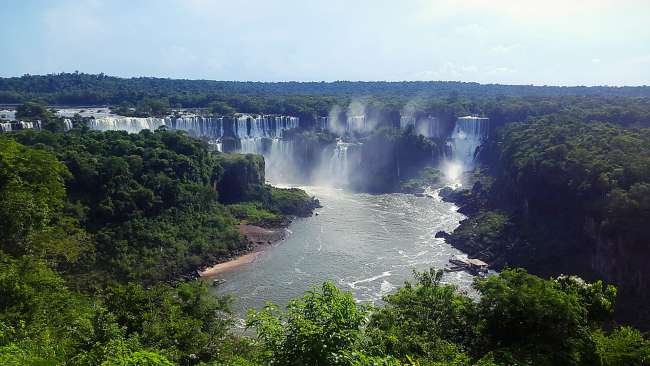
Vojaĝraportoj Argentino

